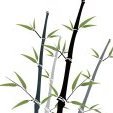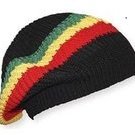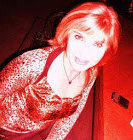-
Content Count
28 -
Joined
-
Last visited
-
Days Won
1
GoldWTcal last won the day on May 23 2024
GoldWTcal had the most liked content!
Community Reputation
1 NeutralRecent Profile Visitors
9,034 profile views
-
GoldWTcal started following Moving averages on 60 minutes, 30 minutes, and 15 minutes charts, How did you find your edge?, How to change log in email address and password and and 4 others
-
It is said ( from the trading books and experienced trading mentors) that it is better to stick with just one ( or at most two ) strategy for either day trading or swing trading. The advantages include: - by focusing on one strategy, you can better ( easier ) find out the accuracy and profit/loss ratio of your strategy; by a number of testing. - there are all kinds of entry points / setups during the day in the market, by " filtering out " the various opportunities and narrow down to just one type of setups ( entry points ) , you are easier to react to price actions that keep moving and changing, and your emotion will be more stable and easier to control and be calm. It is said that " do not attempt to catch all opportunities in the market " & " Less is more". Hope it helps.
- 1 reply
-
- 1
-

-
Dear admin: The question is, How to change the email address that I registered my account with on your forum and website. Also, how to change the password for log in. I have check the " my account " on your website, it looks to me this function is unavailable. thank you,
-
A lot of day trading strategies are basically for going long positions. Such as Bull Flag, ABCD, etc. A question for those experienced traders: When you go short for a stock, what strategy do you usually use? ( the most often used one ). Can you please share tips like: 1) why do you pick this strategy as the favorite for going short - what are the reasons behind when there are other strategies available. 2) the pros and cons Thank you,
-
Thanks, Alastair, for the information. I may come back to this post for further questions - this is an interesting topic to me.
-
Thanks, Alastair. I don't disagree with your comments here. That is true. Honestly, what I truly want to hear by my original post is, if some experience day traders can confirm for me ( with their experience ) about my thoughts ( guess ) - that is, tape reading is only helpful for trading small float stocks but not suitable for the large float ones ( to be more specific, float shares > 500 million shares, daily volume > 1 - 2 million shares per day ).
-
Thanks a lot, Alastair, for this information. But, again, for those small float stocks, ( e.g. with daily trading volume of 100K - 500K shares per day ) I have no doubt that tape reading is very helpful to determine the entrance and place stop loss, find trading opportunity, etc. I understand some of the information from tape reading is not available from the candlestick charts. They provide more detailed, fine information. However, the question is, for a large float stock, such as AMD, NVDA, etc, the spreads and slippages are so small, if you watch the level 2 book data, they are so "thickly" traded, with very good liquidity. and again, the data is moving so fast and hard for human eyes to catch them. I am just wondering if it still makes any sense using tape reading when trading these big stocks.
-
Thanks, Alastair But, what ( or who ) is " SMB " , sorry?
-
Good morning: A question for those experienced day traders. It is said that tape reading is important for day trading - time & sale and level 2 order book data. Because it gives more details for trading. But my question is, when day trade a large float stock, such as AMD ( Advanced Micro Devices, Inc.), which has high daily volume ( AMD has 70 - 90 Million shares traded per day ), very small spread on NBBO ( usually 1 or 2 cents ) and therefore very small slippages, do you still use tape reading - I mean do you still watch the level 2 and time & sales data when doing the trading. Does tape reading still make any sense for these large float stocks at all. One more thing to add is, you know, the data in the level 2 and time & sale windows is moving so fast for a stock like AMD, and therefore hard to catch and keep track of. thank you.
-

The realistic and average win rates
GoldWTcal replied to GoldWTcal's topic in Day Trading Strategies
Thank you, Angela and Peter. Will review the comments and I may have further questions. Appreciated. -
Good day, In Andrew's two books about day trading ( the beginner's and the advanced techniques one ), about 8-10 strategies are mentioned. A question is, ( which is not mentioned in the books ), what are the expected and / or realistic win rates for these strategies? I mean if Andrew himself performs the trades with the strategies designed in the books, what win rates can be achieved? By win rate, I mean, lets say, if you take 100 trades with a given strategy ( a set up ) , if you have 50 win trades, then the win rate would be 50%. As a buyer of these two books, will appreciate the answer to the above question.
-
 GoldWTcal changed their profile photo
GoldWTcal changed their profile photo
-
Thanks, Peter for your reply.
-
Good day, In Andrew's book - " How to day trade for a living", on page 114-115, he wrote: " I personally prefer IB as my broker and DAS Trader as trading platform. My broker offers their own platform called TWS, which I do not recommend for day trading. " What are the reasons behind the author's discouragement to use TWS for day trading? It seems that TWS charges a way lower data package fees for level 2 data and there is no monthly fee for using the platform. For a small trading account, honestly fees and expenses do make differences. Will appreciate the clarifications in this respect. Thanks
-

Moving averages on 60 minutes, 30 minutes, and 15 minutes charts
GoldWTcal replied to GoldWTcal's topic in Day Trading Basics
Thanks, Peter. -
Good day, A question about the moving averages that experience day traders normally use on their 60 minute, 30 minute, and 15 minutes charts. ( I am talking about stock trading only ) 1) first of all, do you actually use 60 minute, 30 minute, and 15 minutes charts or not when you day trade ( during the trading hours )? I know many people use 5 minutes and 1 minute chart no question. 2) what moving average ( SMA or EMA or else ) do you use on 60, 30, 15 minutes charts? I know typically people use EMA 200, EMA 20, EMA 9 on short time frame ( 5 minutes and 1 minute). Thanks
-

how to avoid being stop out in this profitable trend?
GoldWTcal replied to GoldWTcal's topic in Day Trading Strategies
Thanks again, Angela. Very valuable comments. What is HOD? I agree there are many factors that need to be considered to make trades. Day trading is not an easy job.




